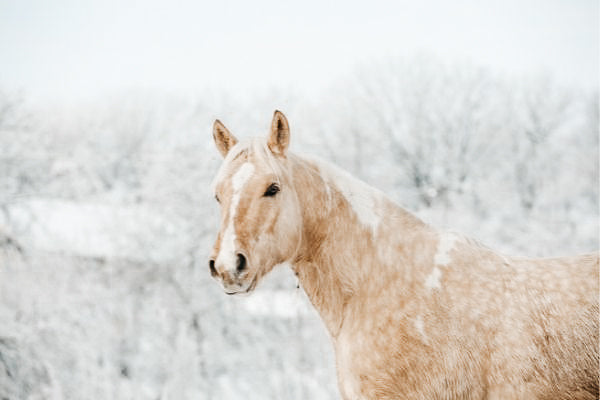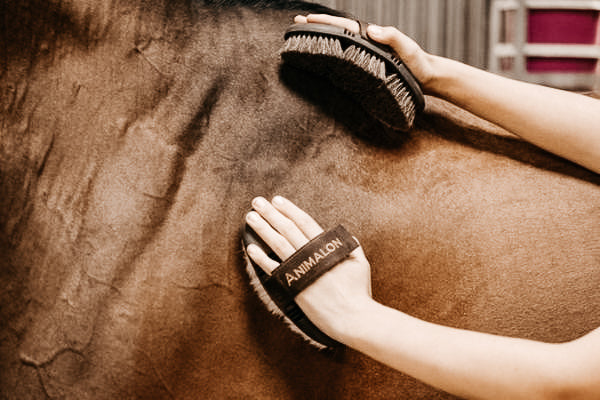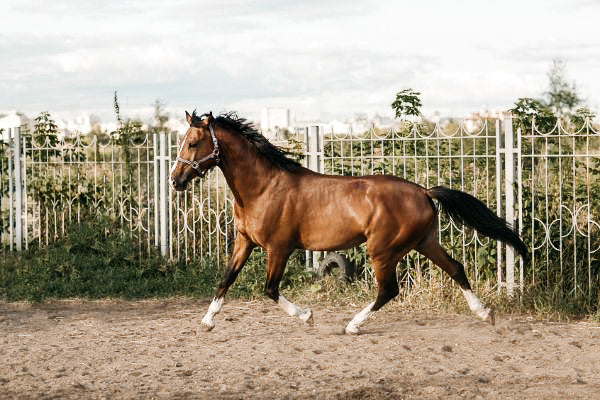
Why are horses sheared in winter?
Dear Winterfell!
Every year in autumn it's that time again, winter fur is approaching!
And your beloved horse mutates into a teddy bear (some even into a grizzly bear?)
If your riding style is more recreational, you will most likely not have the problem of extreme sweating - or if you do, then it will be rare.
However, if you go more into the sport riding direction and ride and train your horse almost every day, then it can happen that your horse sweats extremely in the winter and takes a long time to dry off its winter coat.
If this is the case, then you should definitely think about whether you should clip your horse after all! ?

Sweaty horses are more vulnerable!
If your horse is completely sweaty after riding and you put him back in his box/or on his paddock without a blanket, then he can very easily catch a cold from drafts!
Of course, a sweat blanket can help here, but even with a sweat blanket it can take a long time until your horse is completely dry. Therefore, you should definitely cover your horse at least when it is wet.
When you shear your horse, the fur is of course much shorter and therefore your horse simply doesn't sweat as quickly - and if it does, the short fur dries much faster than the long teddy plush.
Which shearing cut should I choose for my horse?
There are many different ways you can clip your horse. But it also depends on how much your horse sweats. Horses are usually clipped in winter so that they don't sweat too much.
If your horse sweats very lightly, you can give him a “bib cut” . Here the horse is only shorn on the underside of the neck and on the front of the chest (this cut is also often used on horses that are kept in an open stable).
Of course there are many other ways to clip your horse. The large shear cuts and shear patterns are particularly popular with sport riders (Irish cut, narrow stripe cut, etc.) What is also very popular are shearing patterns on the horse's hindquarters - there are no limits to your imagination! ?
However, remember that when you clip your horse, you also have to cover it! Otherwise your horse would freeze and catch a cold very quickly.

How do I clip my horse?
Preparation:
- Make sure that your horse has already moved a bit that day and doesn't have too much unnecessary energy - this makes it easier to "stand still";
- Make sure your horse's coat is dry and clean before clipping;
- Make sure the floor is dry and non-slip, especially for nervous horses;
- For nervous horses who don't like the noise of the clippers, there's a really great trick - turn on music! ?
Shear pattern:
If you have chosen a slightly more complicated shearing pattern or are still unsure about shearing, you can also draw the shearing pattern on your horse's coat with chalk.
Which direction?
Shearing is done against the direction your horse's fur grows, i.e. from back to front. It's best to shave your head and legs last!
Where to start?
It's best to start with the insensitive parts of the body such as the croup or neck of your horse.
How often do you oil the clippers?
You should oil both the shaving machine and the shearing blades every 10-30 minutes. Every now and then, remove the accumulated horse hair with a brush.
Caution: danger of slipping!
Every now and then, sweep up any hair that has fallen on the floor! Not that anyone makes The Flying Dutchman anymore! ?
Remove loose hair and dust
After clipping, you must definitely brush your horse thoroughly or even wash it so that the itchy hair doesn't stay on the skin.

Which blanket should I use for my horse?
There are of course various factors that play an important role!
Shear pattern:
The more extensively you have clipped your horse, the less winter fur it has and it will also freeze. Be sure to pay attention to your horse's signs. If he is standing in his box shivering or his fur looks extremely "stuck" despite the blanket, then you should definitely put a thicker blanket on him!
On the other hand, if your horse has a blanket that is too thick, you will of course be able to tell whether the blanket is too thick or warm by its sweating.
The beautiful picture up there is of our dear Sarah and our dear Jens. Just take a look here at her profile.
Temperature:
Of course, temperature also plays a crucial role. Also proceed as described above with regard to the weather. Pay attention to your horse's signs!
Discover more posts

Everything about the body brush
Where does the term “ body brush ” come from? This type of horse brush used to be made from the seed heads of the teasel thistle. The term comes from the Latin word “carduus” and means “thistl...
Continue reading
The world of horse breeds Have you ever wondered how many horse breeds there are? – Unfortunately there is no concrete answer to this either. ☹ According to current estimates there are around ...
Continue reading
